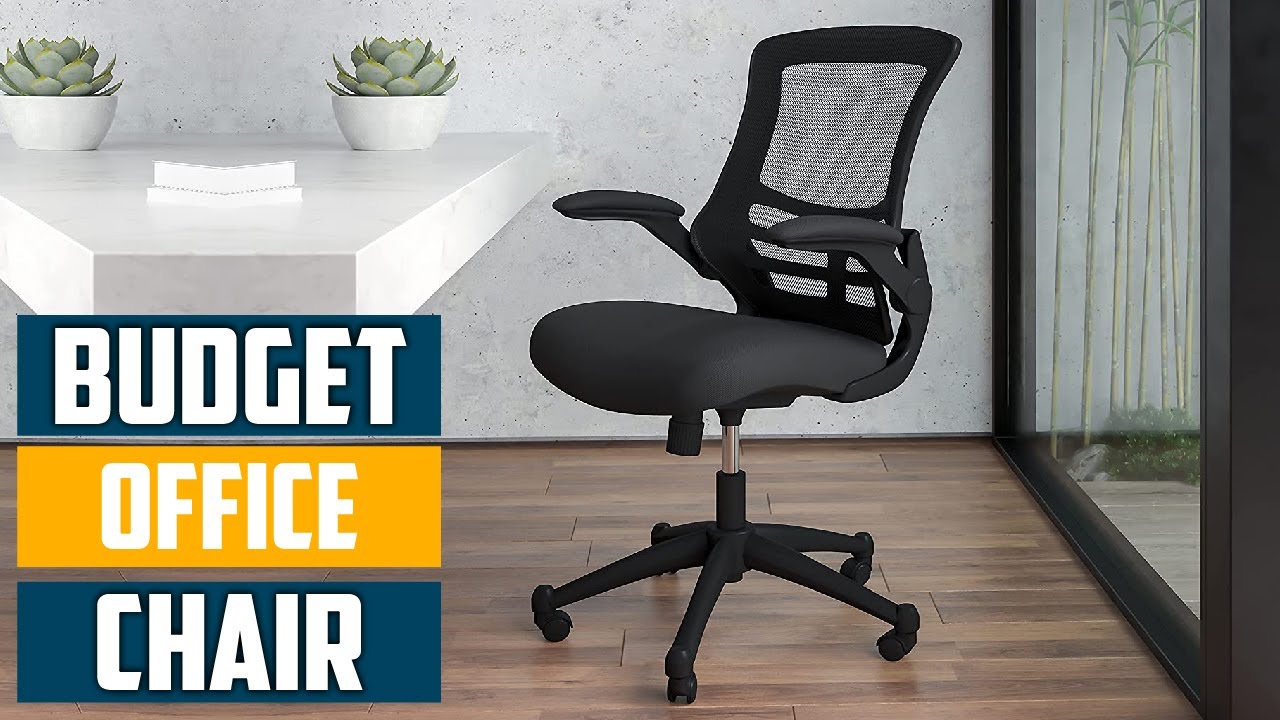Finding The Best Office Chair In 2025: A Practical Guide

Table of Contents
Understanding Ergonomics: The Key to Comfort and Health
Ergonomics is the science of designing workspaces to maximize efficiency and minimize discomfort. Choosing an ergonomic office chair is paramount for your physical well-being and productivity.
Posture and Spinal Alignment
Proper posture is fundamental to preventing long-term health issues. An ergonomic chair actively supports this:
- Lumbar Support: A contoured backrest with adjustable lumbar support cradles your lower back, maintaining its natural curve and reducing strain.
- Adjustable Height: Allows you to position your feet flat on the floor and your thighs parallel to the ground, promoting proper posture and blood circulation.
- Adjustable Armrests: Support your forearms, reducing shoulder and neck tension. They should be height and width adjustable to perfectly match your body.
- Neutral Spine Position: The ideal posture involves maintaining the natural S-curve of your spine. The best office chairs help you achieve this neutral position, reducing strain on your back and neck.
Preventing Back Pain and Musculoskeletal Issues
Investing in an ergonomic chair is an investment in your long-term health. Studies show a strong correlation between poor posture and increased risk of:
- Back pain: A leading cause of disability worldwide.
- Neck pain: Often stemming from prolonged periods of poor posture.
- Carpal tunnel syndrome: A condition affecting the wrists and hands, often aggravated by improper desk setup.
- Other work-related musculoskeletal disorders (WMSDs): These debilitating conditions can significantly impact quality of life.
By choosing an ergonomic chair that promotes proper posture and reduces strain, you significantly reduce your risk of developing these painful and debilitating conditions.
Essential Features to Consider When Choosing an Office Chair
Beyond basic comfort, several features contribute to a truly ergonomic and supportive chair.
Adjustability
Adjustability is key to personalization and long-term comfort. Look for chairs with:
- Height Adjustment: Allows you to customize the chair's height to your body.
- Lumbar Support Adjustment: Lets you fine-tune the lumbar support to perfectly fit your lower back curve.
- Armrest Adjustment: Allows you to position the armrests to support your forearms comfortably.
- Seat Depth Adjustment: Enables you to adjust the seat's depth to support your thighs properly.
These adjustments ensure the chair adapts to your body, not the other way around.
Materials and Durability
The materials used in your office chair significantly impact its comfort, longevity, and overall quality:
- Mesh: Breathable and lightweight, ideal for warmer climates and those who prefer a less constricting feel.
- Leather: Durable, luxurious, and easy to clean, but can be less breathable than mesh.
- Fabric: Offers a good balance of comfort, breathability, and durability, coming in a wide range of styles and colors.
Consider your climate, personal preferences, and budget when selecting the right material.
Additional Features
Numerous additional features can enhance your comfort and experience:
- Headrests: Provide support for your neck and head, especially beneficial for longer work sessions.
- Tilt Mechanisms: Allow you to recline the chair to change your posture, reducing pressure on your spine.
- Casters: Smooth-rolling casters ensure easy mobility.
- Other Optional Features: Consider features like built-in lumbar support pillows, adjustable seat angles, and height-adjustable armrests.
Setting a Budget and Finding the Right Office Chair for Your Needs
Finding the best office chair in 2025 requires considering both your needs and your budget.
Budget Ranges
Office chairs span a wide price range:
- Basic Office Chairs ($50-$200): Offer basic functionality but may lack significant ergonomic features.
- Mid-Range Ergonomic Chairs ($200-$500): Provide better adjustability and ergonomic features for increased comfort and support.
- High-End Executive Chairs ($500+): Offer premium materials, advanced ergonomic features, and superior comfort.
Consider your budget and prioritize features that align with your needs and long-term health.
Different Chair Types
Different chair types cater to specific needs and preferences:
- Task Chairs: Versatile and widely available, suitable for a variety of workstyles.
- Executive Chairs: Often feature luxurious materials and advanced ergonomic features.
- Gaming Chairs: Designed for extended gaming sessions, they offer superior comfort and support but may not be ideal for all office settings.
- Kneeling Chairs: Promote better posture by encouraging a more upright seated position.
Choose the style that best complements your work habits and preferences.
Where to Buy
You have several options for purchasing your new office chair:
- Online Marketplaces: Offer a wide selection and competitive pricing, but may require more research and careful consideration of return policies.
- Specialized Furniture Stores: Provide expert advice and allow you to test chairs before purchasing.
- Office Supply Stores: Offer a range of options, but may have a more limited selection than specialized stores.
Weigh the pros and cons of each option before making your purchase.
Maintaining Your Office Chair for Long-Term Use
Proper maintenance ensures your chair's longevity and optimal performance.
Cleaning and Maintenance
Regular cleaning is vital to preserving your chair's appearance and hygiene:
- Regular Cleaning: Vacuum or wipe down the chair regularly to remove dust and dirt.
- Lubrication of Moving Parts: Keep moving parts lubricated to prevent squeaking and ensure smooth operation.
- Material-Specific Care: Follow the manufacturer's instructions for cleaning and caring for the specific material of your chair (leather, fabric, mesh).
Troubleshooting Common Issues
Addressing common problems can prolong your chair's lifespan:
- Squeaking Sounds: Lubricate moving parts or tighten loose screws.
- Loose Parts: Tighten loose screws or bolts, or contact the manufacturer for assistance.
- Other Potential Issues: Refer to the manufacturer's instructions or contact customer service for more complex problems.
Conclusion
Finding the best office chair in 2025 involves careful consideration of ergonomics, essential features, budget, and maintenance. By prioritizing proper posture, adjustable features, durable materials, and regular upkeep, you'll create a healthier and more productive workspace. Remember to revisit the sections on ergonomics, features, and budget ranges to make the best choice for your needs. Invest in a comfortable and ergonomic chair today – your back (and your productivity) will thank you!

Featured Posts
-
 Relay Sweep Secures T Bird Girls Home Invite Victory
May 26, 2025
Relay Sweep Secures T Bird Girls Home Invite Victory
May 26, 2025 -
 Louisiana Horror Film Sinners To Hit Theaters Soon
May 26, 2025
Louisiana Horror Film Sinners To Hit Theaters Soon
May 26, 2025 -
 Le Sketch Du Grand Cactus Juge Par Le Csa Decision Et Consequences Pour La Rtbf
May 26, 2025
Le Sketch Du Grand Cactus Juge Par Le Csa Decision Et Consequences Pour La Rtbf
May 26, 2025 -
 Moto Gp Inggris Sprint Race Jadwal Tayang Di Trans7 Rekor Rins Dan Jatuhnya Marquez
May 26, 2025
Moto Gp Inggris Sprint Race Jadwal Tayang Di Trans7 Rekor Rins Dan Jatuhnya Marquez
May 26, 2025 -
 Rtbf Et Grand Cactus Le Sketch 128e Sexe Et Les Sanctions Du Csa
May 26, 2025
Rtbf Et Grand Cactus Le Sketch 128e Sexe Et Les Sanctions Du Csa
May 26, 2025
Latest Posts
-
 Paris Roubaix Bottle Throwing Spectator Surrenders To Police
May 26, 2025
Paris Roubaix Bottle Throwing Spectator Surrenders To Police
May 26, 2025 -
 Tirreno Adriatico 2024 Mathieu Van Der Poels Custom Bike Revealed
May 26, 2025
Tirreno Adriatico 2024 Mathieu Van Der Poels Custom Bike Revealed
May 26, 2025 -
 Canyon Aeroad Mathieu Van Der Poels Custom Ride For Tirreno Adriatico
May 26, 2025
Canyon Aeroad Mathieu Van Der Poels Custom Ride For Tirreno Adriatico
May 26, 2025 -
 Mathieu Van Der Poels Stunning Canyon Aeroad At Tirreno Adriatico
May 26, 2025
Mathieu Van Der Poels Stunning Canyon Aeroad At Tirreno Adriatico
May 26, 2025 -
 Pressure Mounts Ex Israeli Female Soldiers Advocate For Gaza Captive Release
May 26, 2025
Pressure Mounts Ex Israeli Female Soldiers Advocate For Gaza Captive Release
May 26, 2025
